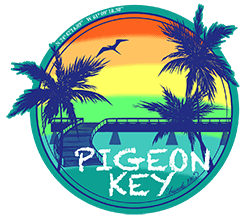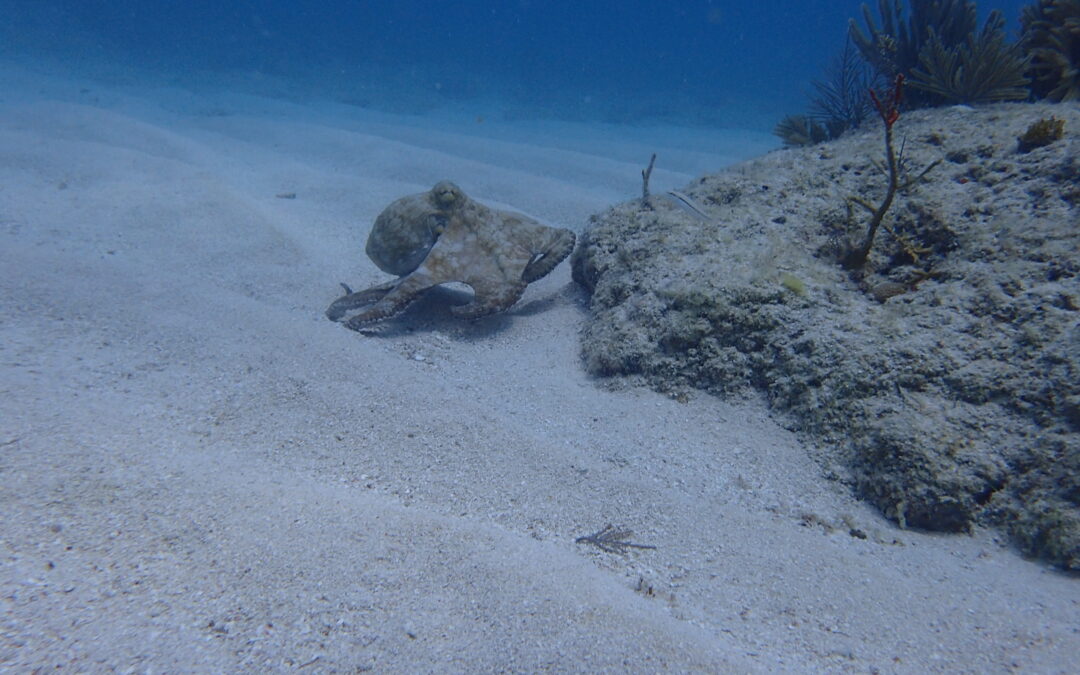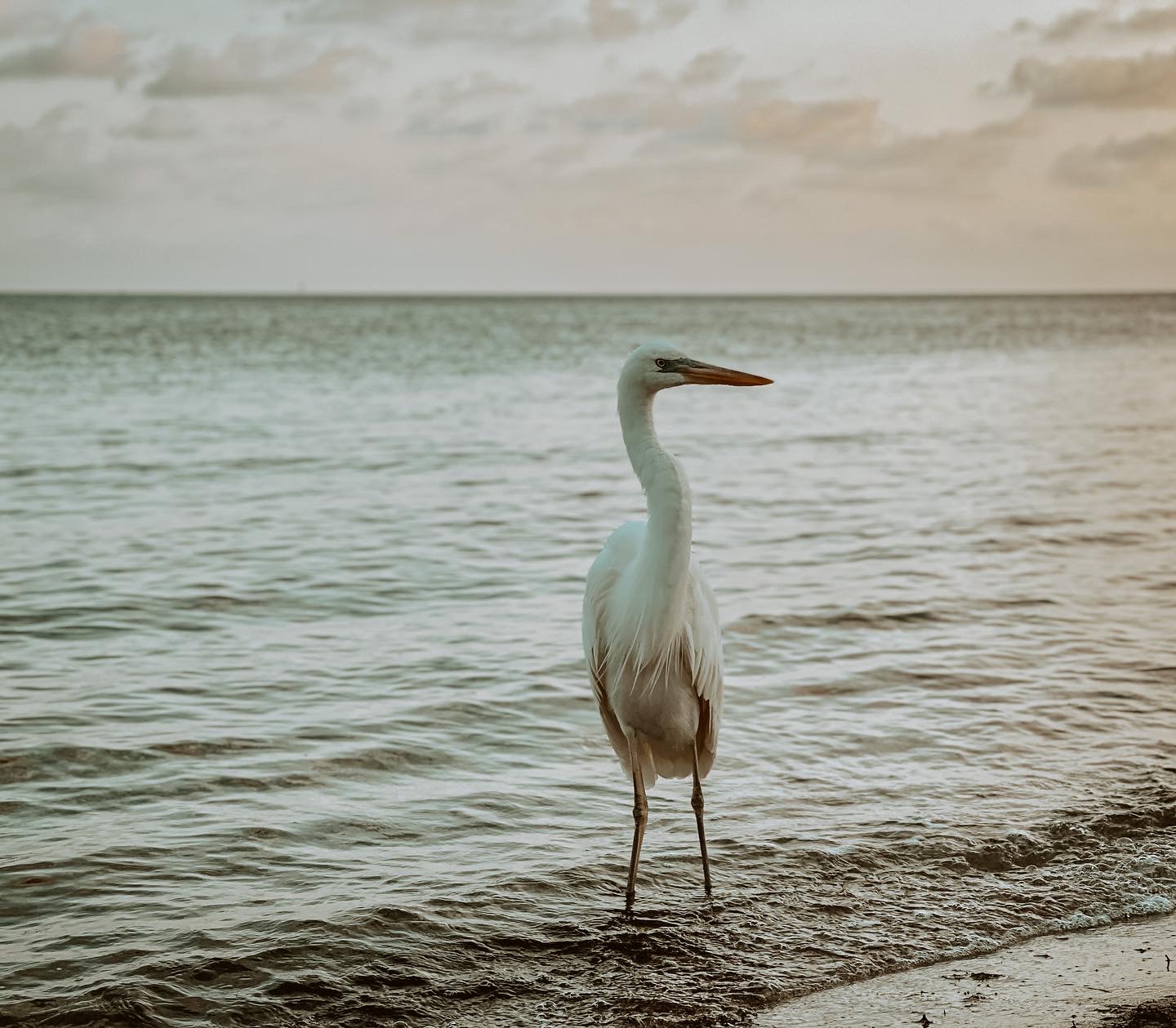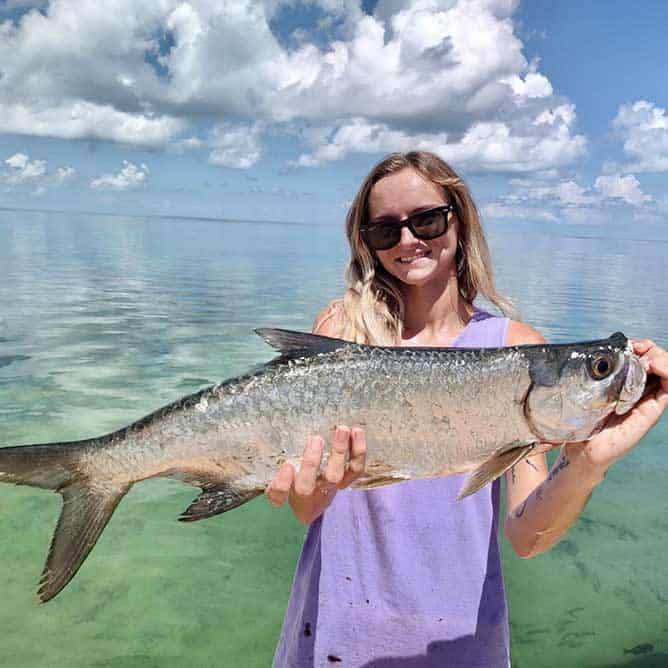Survival in shallow water ecosystems is often tied to how well an animal can hide from larger predators and octopuses are masters of disguise. Like other organisms found in the class Cephalopoda, including squid and cuttlefish, octopuses have color-changing cells in their skin called chromatophores that help them camouflage. Octopuses and cuttlefish can also change their skin texture through tiny manipulations of their muscles, allowing them to blend in almost perfectly to any background. The Caribbean Reef Octopus, Octopus briareus, often use these adaptations to make themselves look like coral or sponges, common animals found in the octopuses’ native habitat of warm tropical waters from South Florida’s reefs and seagrasses to the northern coast of South America and throughout the Caribbean.
The Caribbean Reef Octopus is also one of the most intelligent invertebrates! Like some other octopuses, this species is known to use and reuse tools for a variety of tasks. Some use shells, coconut husks, and rocks to improve the camouflage of their den while others use objects to help camouflage themselves. They have also been observed to learn from past mistakes, mainly in response to being hunted by predators, leading to adjusting their behavior to be more successful.
These octopuses grow and mature very quickly, helping maintain healthy population sizes in the majority of their range. With a lifespan of about a year to a year-and-a-half, Caribbean Reef Octopuses are able to reproduce as early as 5 months old and are semelparous, meaning they only mate once in their life. Males will die shortly after fertilizing a female’s eggs, while the female dies shortly after the eggs have hatched. Female Reef Octopuses lay around 500 eggs and protect them for the entire 2 month incubation period, during which females do not leave their nest. Newly hatched Caribbean Reef Octopuses are only about 5cm long but will grow to have a mantle length (the rounded soft body and head portion) of up to 12cm with each of their 8 arms (octopuses do not have tentacles!) growing up to 60cm in length.
Here on Pigeon Key, juvenile Caribbean Reef Octopuses inhabit the shallow hardbottom and seagrass bed habitats surrounding our island, hiding under and in-between rocks, large sponges, and even empty conch shells! These octopuses stay hidden in their dens during the day and hunt at night in order to avoid predators like large bony fish, sharks, and eels. Juveniles mainly feed on small invertebrates such as marine snails, small crabs and juvenile lobsters while adults eat clams, large marine snails, and adult lobsters. If threatened, the Caribbean Reef Octopus can eject a dark ink that both inhibits the sight of its predator, allowing the octopus to make an escape, and also smells bad, which helps deter the predator from continuing its pursuit. Most often however, these creatures simply change their texture and color in a heartbeat, blending in seamlessly with their surroundings. So next time you’re snorkeling or tide pooling around Pigeon Key, make sure you keep your eyes peeled for these masters of camouflage!




